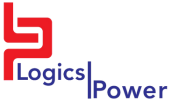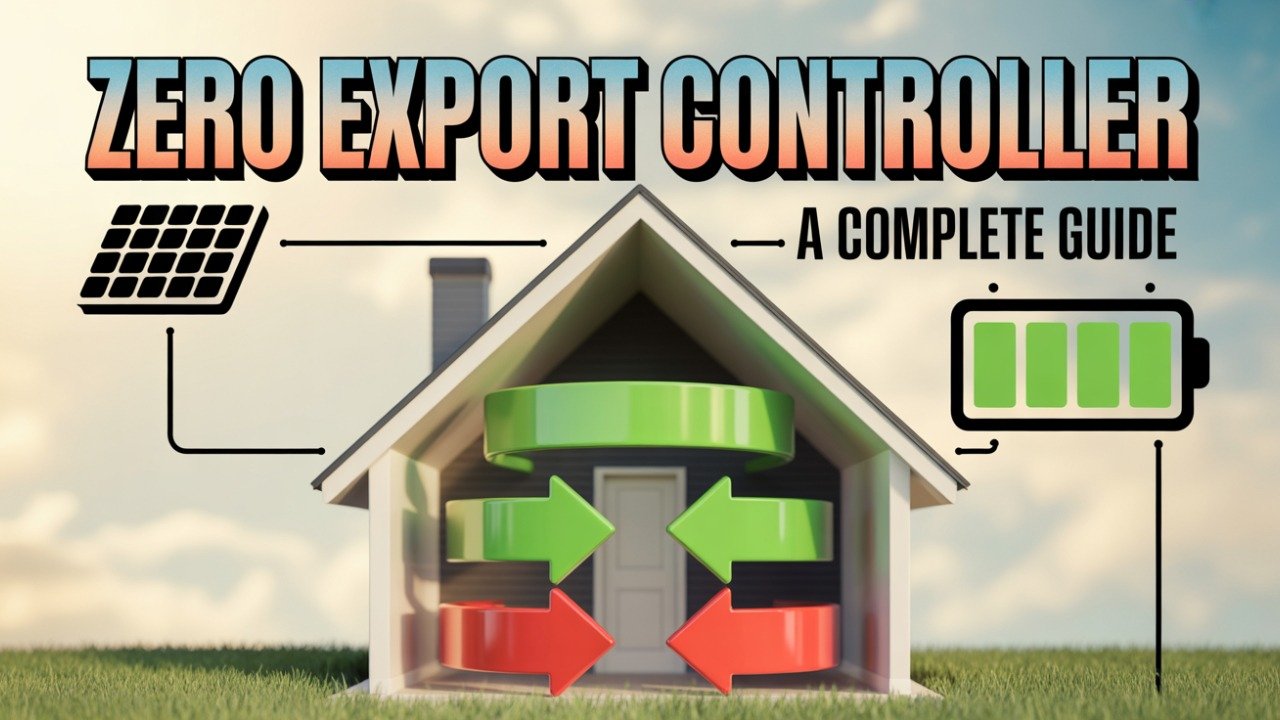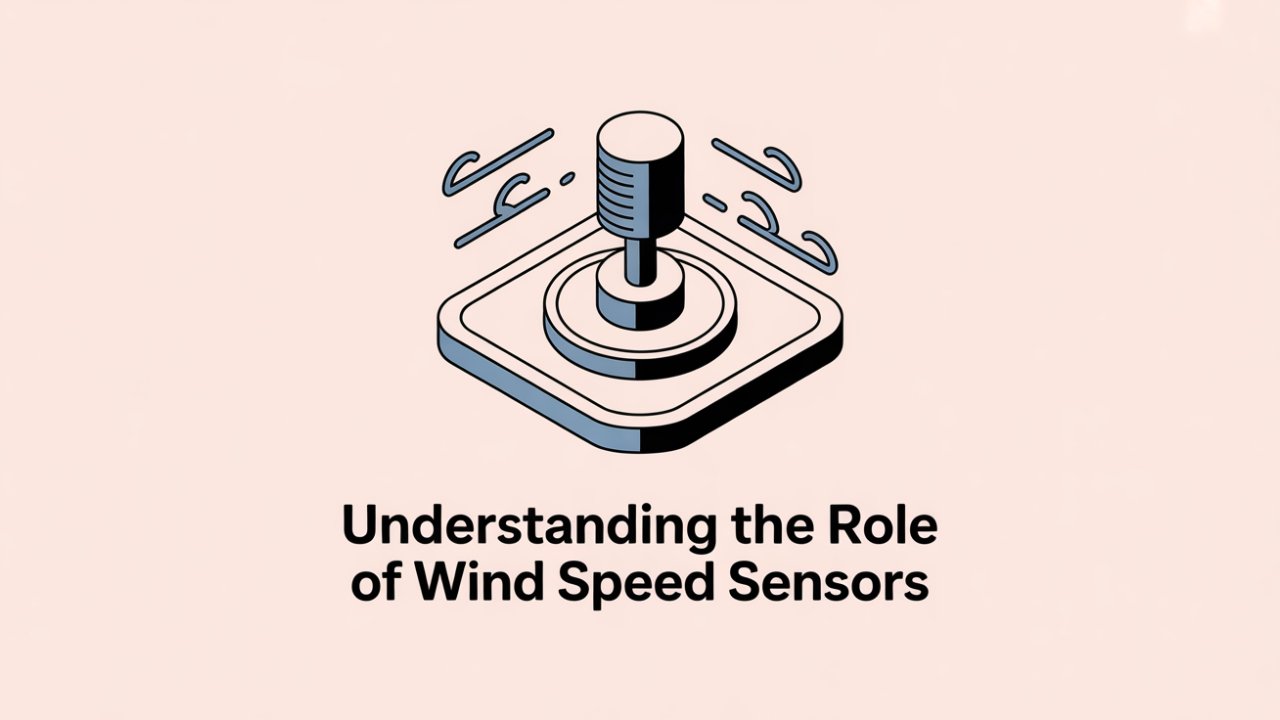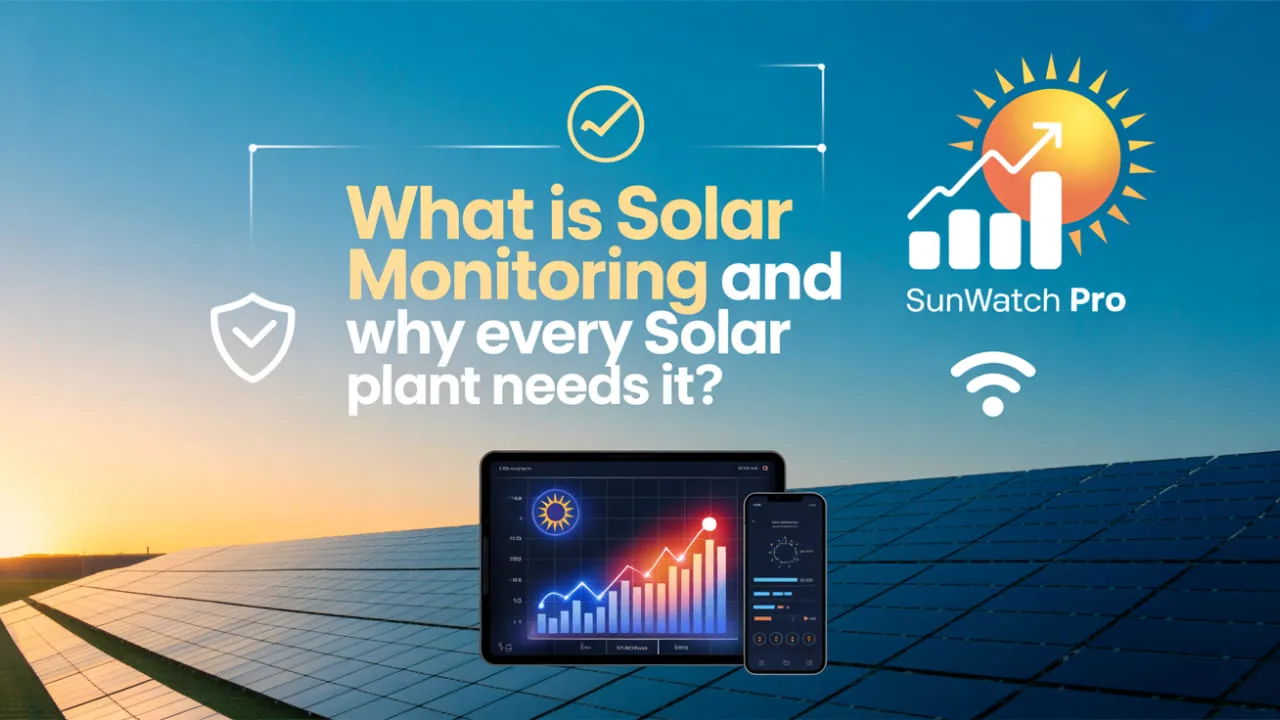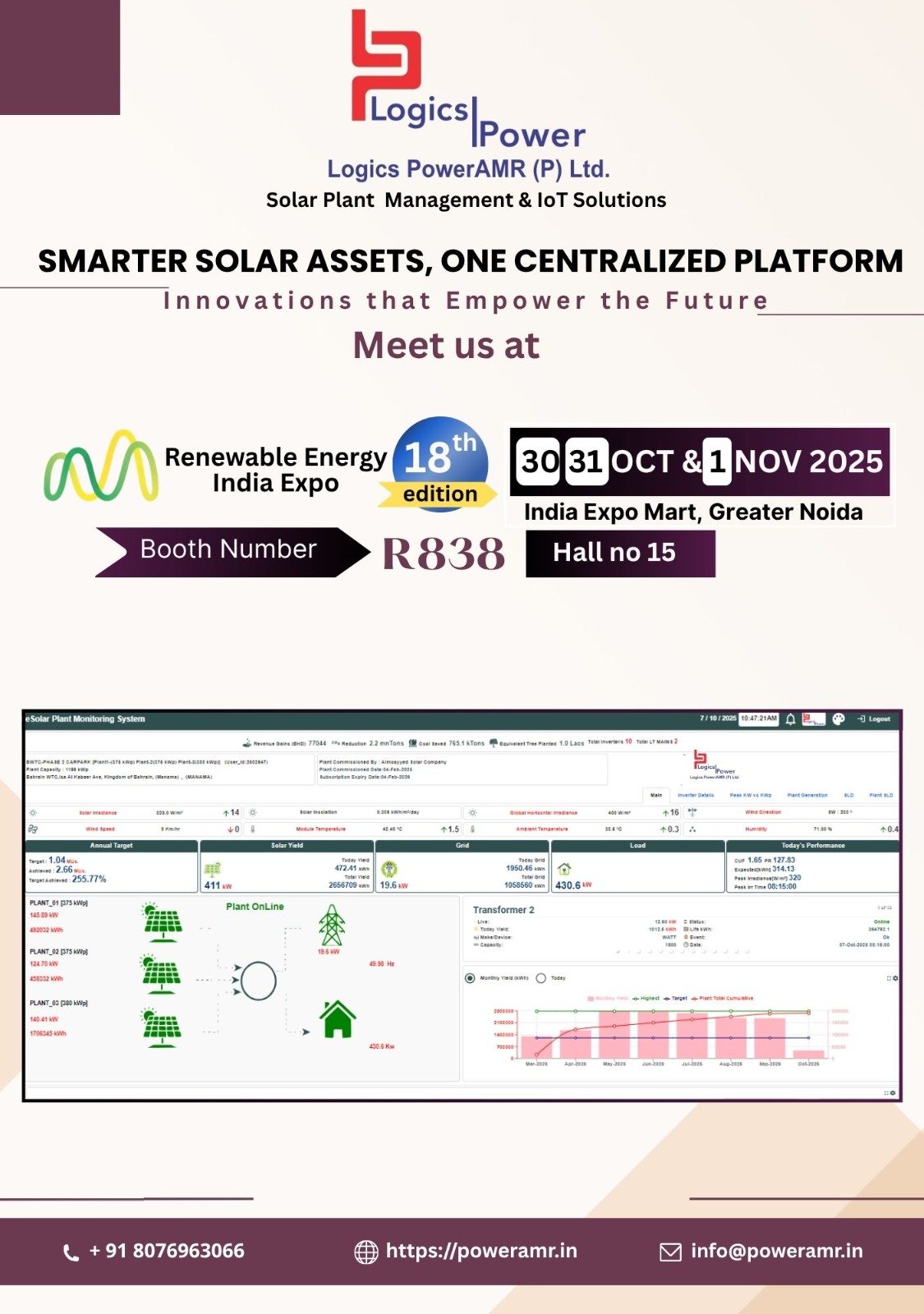14/10/2025
Blogs
Why Wind Monitoring Matters in Solar-Wind Hybrid Systems
Why Wind Monitoring Matters in Solar-Wind Hybrid Systems
Wind Monitoring for Solar-Wind Hybrid Sites: Why It Matters
As India directly integrates its grand adoption of renewable energy plus solar hybrid systems that are gaining traction for their ability to ensure fast and consistent power generation. The national electricity plan of India targets around 500 GW of energy through renewable sources by 2030, and that’s backed by a sum of ₹9.15 lakh crore, with different hybrid projects playing a bigger role to achieve this target. These systems do use India’s coastline, which has high-speed winds and great resources for solar and hybrid installations.
However, doing proper optimization of all these installations requires high-end and efficient monitoring for both solar and wind components—a gap that Logics PowerAMR’s IoT-based systems can address directly. Logics PowerAMR helps in dynamic load balancing plus predictive maintenance plus grid stability, which perfectly aligns with the push for India to generate power through renewable sources of energy. This complete approach helps in moving towards better efficiency and a reduction in operational costs, thus supporting the nation towards moving into a sustainable future.
Growing Popularity of Hybrid Energy Systems in India
-
Hybrid systems help in direct simulation towards unique and intermittent possibilities for the creation of perfect solar and wind synergies in India, where the renewable energy targets are around 500 GW through renewable sources.
-
The advanced systems of Logics PowerAMR and its complete IoT-managed approach help in providing highly accurate management of all these systems, thus giving maximum yield, efficiency, and high reliability. These IoT systems of Logics PowerAMR provide exceptional and real-time monitoring of resources and thus provide dynamic load balancing plus predictive maintenance.
Why Wind Monitoring Is Critical in Hybrid Sites
Wind is crucial for two major factors:
-
Energy Production Planning: Direct and real-time metrics for monitoring speed and direction that help forecast the right output, thus enabling structured load balancing plus grid combination. Advanced forecasting tools, which directly analyze historical trends along with real-time conditions. The algorithms that are tailored to wind and solar systems. The right wind data compatibility for smoothing of energy flow peaks, a perfect factor for hybrid projects.
-
Structural Integrity: Wind forces that can displace and damage solar panels, thus monitoring the panels in a secured manner, thus preventing downtime. Higher speed winds, especially those winds in coastal areas or in open-land hybrid farms, directly impact panel longevity and efficiency, thus necessitating real-time adjustments for both orientation and mounting systems.
-
By tracking multiple factors like turbulence and gust intensity, operators can easily input predictive maintenance, thus reducing risks of structural failure in shared infrastructure environments where these panels exist.
Key Metrics a Wind Sensor Tracks
Metrics that a wind speed sensor tracks:
-
Wind Speed Sensor: Analysis and measurement of velocity for determining energy potential and triggering solar operations during storms. Modern wind sensors like the ultrasonic do provide completely precise and real-time data for optimization of energy harvesting and safeguarding of equipment for extreme weather.
This sensor uses precise data and calculates wind volume (speed x cross-sectional area) for exact grid integration and planning plus adjustments related to solar panel efficiency. By detecting fast and sudden gusts, the wind speed sensor can help in automatic shutdowns, thus reducing any kind of damage or mechanical stress plus downtime.
-
Wind Direction Sensor: Identification of prevalent patterns for optimization of solar panel angles. These metrics can influence the perfect inverter control logic, thus ensuring safe and adaptive operations for extreme conditions.
The wind direction sensor uses systems like directional vanes or ultrasonic arrays for mapping wind flow, thus ensuring that the solar panels can adjust to minimize the wind-induced tilt or any kind of debris accumulation.
Integration Benefits with Solar Benefits
The IoT Platform of Logics PowerAMR that directly integrates with solar/wind data on dashboards. This helps in integrated analytics and analysis and gives the power of smart decisions for allocation of battery storage plus demand-side management.
Challenges in Wind Data Collection (and How to Overcome Them)
-
There are multiple challenges in wind data collection. These remote hybrid sites generally face harsher weather conditions, thus creating a situation of maintenance, a typical challenge.
-
Logics PowerAMR solves this with an extremely rugged and advanced ultrasonic wind speed sensor and wind direction sensor, designed to be highly reliable yet extremely low-maintenance, providing perfect wind data collection even in extreme weather conditions.
Conclusion
Wind monitoring is extremely crucial for maximizing hybrid systems and helpinging them perform in the most efficient and effective manner. By just integrating the Logics PowerAMR’s Wind Speed Sensor and Wind Direction Sensor in your solar or hybrid systems, businesses can simply achieve complete data-driven analytics and control. Easily elevate the performance of your hybrid systems today—partner with Logics PowerAMR now!
10/10/2025
03/10/2025
08/09/2025
18/08/2025
